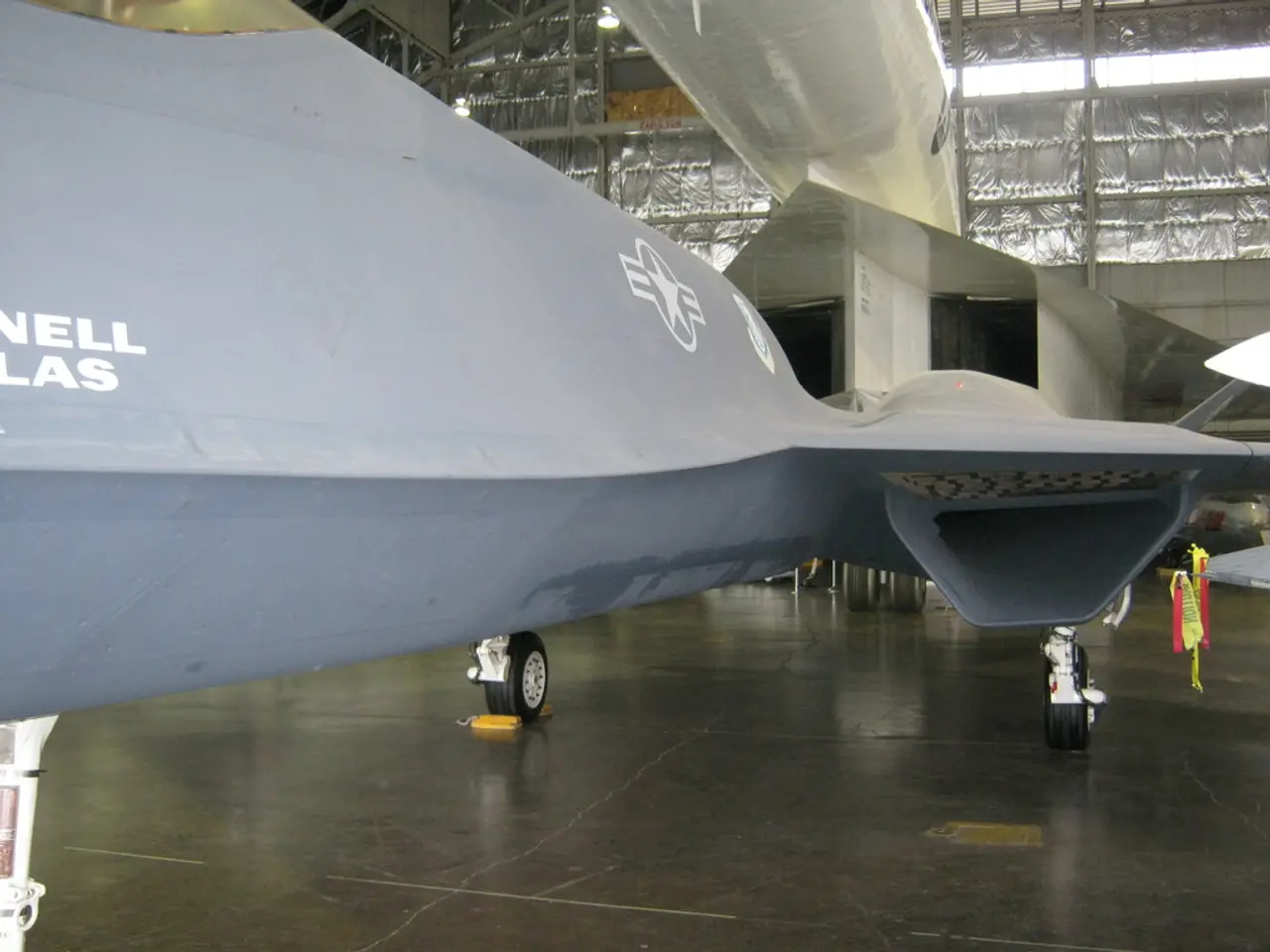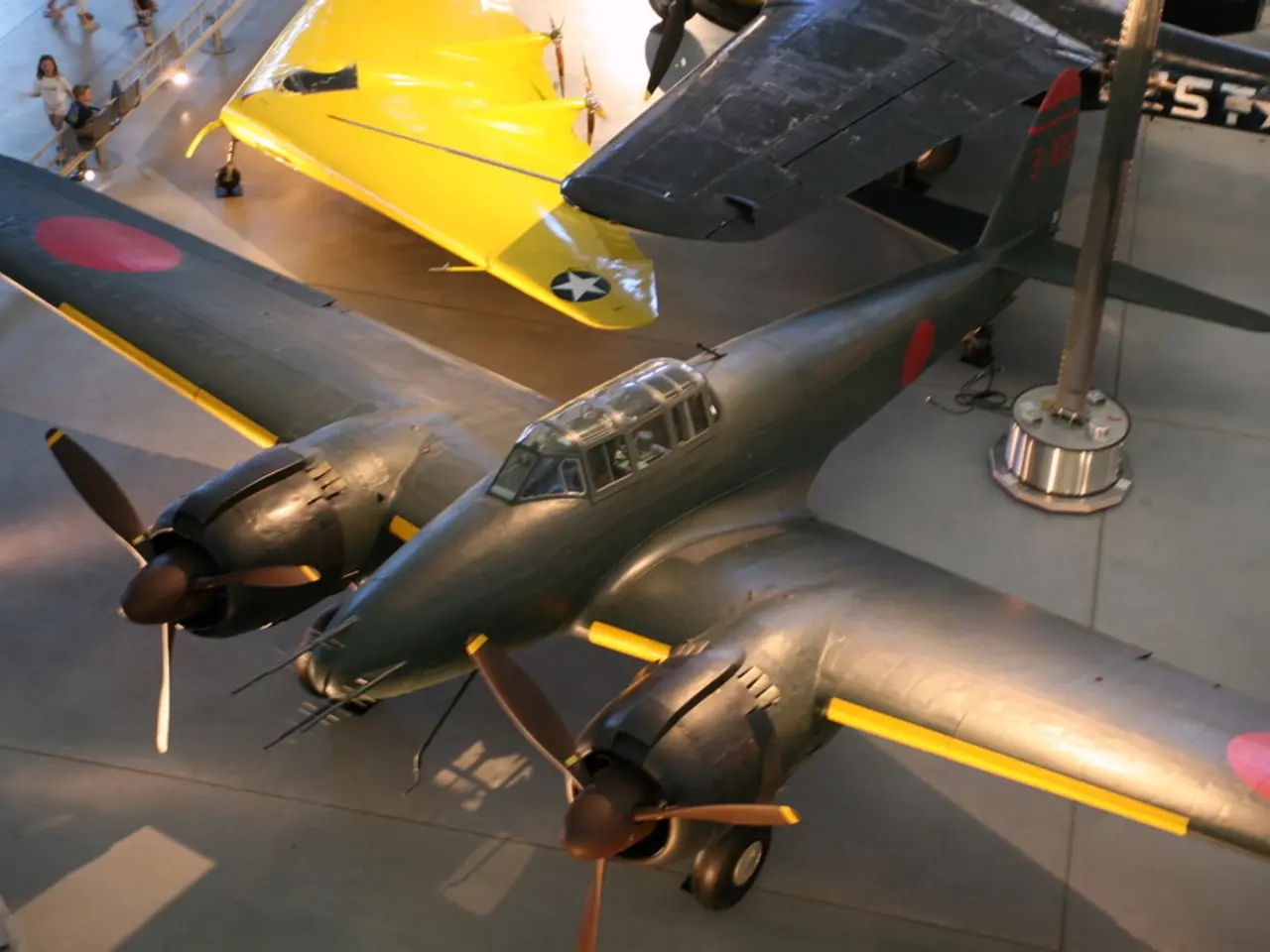Landing Methods Comparison: Distinguishing Between Ditching and Water Landing
In the world of aviation, understanding the key differences between ditching and water landings is essential for both pilots and passengers.
Ditching refers to a controlled emergency landing of an aircraft on water when a safe runway landing is not possible. This specific scenario requires procedures designed to maximize survival chances, including the use of life preservers, life rafts, and the coordination of evacuation in water-based scenarios.
On the other hand, water landing is a more general term, encompassing any landing on a water surface. This could be planned, such as by seaplanes or amphibious aircraft designed for water landings, or unplanned, as in the case of emergency ditching. Water landing in this broader sense may not necessarily involve emergency evacuation procedures like ditching does.
For pilots, knowing the difference will sharpen decision-making skills during overwater emergencies, prepare them for ditching, and motivate them to practice emergency drills regularly.
In the event of a ditching, your top priority is getting everyone to safety. This includes helping passengers and crew find their way out, removing any obstacles, and directing passengers to the nearest escape routes. For passengers, awareness of the difference helps them appreciate safety briefings, pay attention to exit routes, and know how to use their life jackets.
Your aircraft is designed to float for a long enough time for everyone to evacuate and get onto the liferafts. You can evacuate through the doors, ventral exits, or the tailcone of your aircraft. If your aircraft has them, you can use slides or overwing exits. However, it's important to note that overwing slides are often not detachable and cannot be used as rafts, unlike the slide-rafts at the main doors.
Regular emergency drills are important for familiarizing you and your crew with how to use the flotation gear and ensuring coordinated responses. Cabin drills ensure that everyone knows their roles during an evacuation.
For passengers, staying warm is crucial to survival in cold water. Encourage everyone to huddle and share body heat in the raft. Forming a large huddle will also make you more visible to rescuers.
After deploying the life rafts, help your passengers board and keep the atmosphere as stable and controlled as possible. Passengers should inflate their life jackets only after they've made their way out of the aircraft.
In the United States, the Federal Aviation Administration (FAA) requires specific equipment for extended overwater flights in transport category aircraft, including an approved flotation device for each occupant and enough approved life rafts to accommodate everyone on board. Requirements for general aviation aircraft vary based on the type of operation and are outlined in regulations such as Part 91.
Understanding the difference between ditching and water landings is not just a theoretical exercise. Real-life examples illustrate the importance of this knowledge. Ethiopian Airlines Flight 961 in 1996 is an example of a ditching where many passengers perished due to factors such as lack of control of the cockpit, environmental awareness, and crew coordination. On the other hand, US Airways Flight 1549 ("Miracle on the Hudson") in 2009 is an example of a successful ditching where everyone survived with only minor injuries.
Many variables can make a difference in how well you and your passengers fare after ditching, including the environment, rapid rescue response, staying close to rescue resources, and preparation and training.
In conclusion, ditching is an emergency water landing with survival and evacuation procedures due to an unplanned scenario, whereas water landing can include both emergency ditching and routine landings on water by specialized aircraft. Preparation is crucial for every situation in the cockpit, and understanding the difference between ditching and water landings is a vital part of that preparation.
[1] Aviation Safety Magazine. (2014). Ditching 101. Retrieved from https://www.avsafety.org/ditching-101/ [4] Flight Safety Foundation. (2016). Ditching: The Human Factors. Retrieved from https://www.flightsafety.org/resources/publications/aviation-safety-network/ditching-the-human-factors/
In the realm of transportation, the finance industry plays a significant role in procuring the necessary funds for aircraft maintenance and upgrades within the aviation sector. This enables airlines to incorporate safety equipment, such as life rafts and flotation devices, that are essential during emergency water landings and ditching.
Moreover, the industry's ability to invest in advanced training programs for both pilots and cabin crew is crucial for performance during overwater emergencies, especially when implementing evacuation procedures during a planned water landing or an unexpected ditching scenario.








